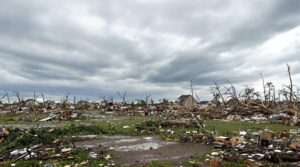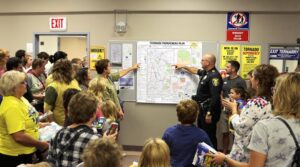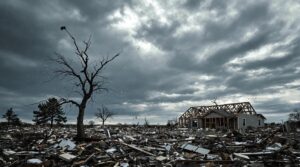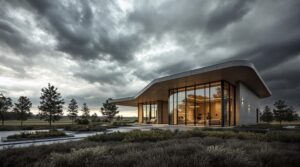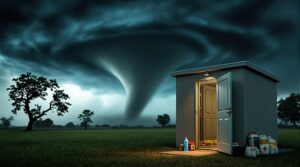A tornado is a violent atmospheric vortex characterized by a rotating column of air that extends from a thunderstorm to the ground. These intense weather phenomena can generate wind speeds up to 300 miles per hour and create paths exceeding one mile in width and 50 miles in length. Tornadoes form when specific conditions align, including warm surface air, high humidity, and vertical wind shear. Understanding the complex dynamics of these powerful storms reveals critical insights about their formation, behavior, and impact.
Key Takeaways
- A tornado is a violent rotating column of air that extends from a thunderstorm cloud to the ground.
- Wind speeds in tornadoes can reach up to 300 miles per hour, causing devastating damage to structures and landscapes.
- Tornadoes typically form during thunderstorms when warm, humid air collides with cold air, creating powerful rotating updrafts.
- These violent storms can create paths exceeding one mile in width and 50 miles in length.
- Warning signs include dark greenish skies, large hail, low-lying rotating clouds, and a distinctive roar like a freight train.
Understanding the Basics of Tornadoes
A tornado is a violent atmospheric vortex characterized by a rotating column of air that extends from a thunderstorm system to the ground. These powerful meteorological phenomena can generate wind speeds up to 300 miles per hour, creating devastation paths exceeding one mile in width and 50 miles in length.
While tornado myths often suggest specific geographical immunity, these storms can occur anywhere conditions permit. The United States averages over 1,000 tornadoes annually.
Identifying tornadoes requires understanding key indicators that aid in tornado survival. These include a dark, greenish sky coloration, large hail precipitation, and a distinctive freight train-like roar.
Tornadoes typically form near thunderstorm trailing edges, where warm, moist, unstable air masses interact. The Enhanced Fujita Scale categorizes tornado intensity from EF0 to EF5, with violent tornadoes (EF3 and above) responsible for approximately 70% of tornado-related fatalities.
Although peak occurrence varies by region, tornadoes most frequently develop between 3 PM and 9 PM, moving at an average speed of 30 mph.
The Science Behind Tornado Formation
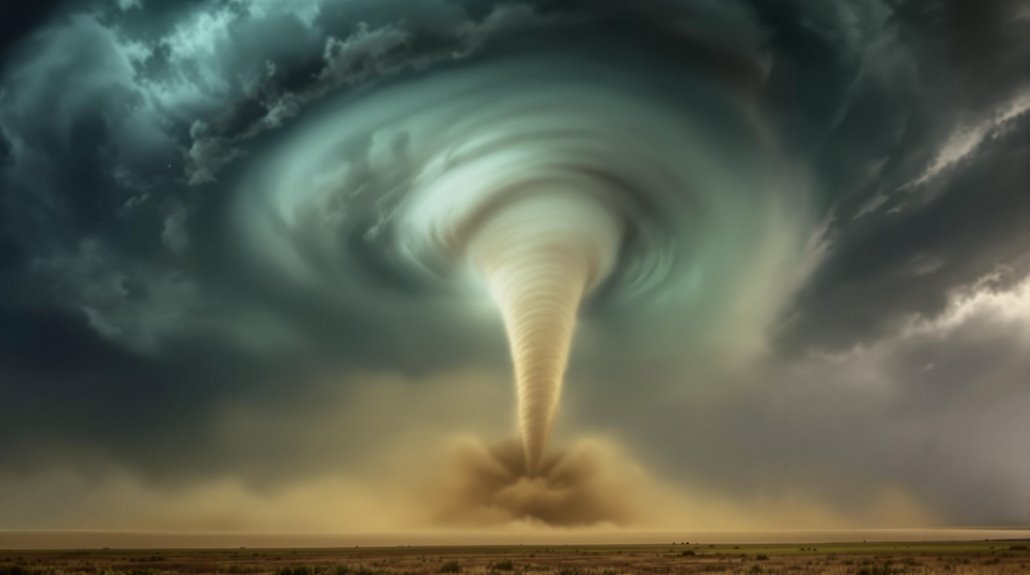
The formation of a tornado requires specific atmospheric ingredients, including warm surface air, high humidity, and vertical wind shear that creates an unstable environment.
Within this environment, supercell thunderstorms develop through the interaction of updrafts and downdrafts, producing a persistent rotating updraft known as a mesocyclone. These violent storms can produce tornadoes with wind speeds over 300 mph.
The tornado manifests when this rotating column of air extends from the cloud base to make contact with the ground, concentrating the rotation into a visible vortex of condensation and debris.
Atmospheric Ingredients Required
Proper atmospheric conditions must align for tornado formation, requiring specific combinations of temperature, humidity, and wind patterns. The primary tornado ingredients include warm, humid air near the ground contrasting with cooler, dry air aloft, creating atmospheric instability.
This temperature differential promotes rapid vertical air movement essential for thunderstorm development. Wind shear plays a significant role, as notable changes in wind speed and direction with height generate the rotation necessary for tornadic activity. Conservation of momentum intensifies rotation as air converges toward the center of circulation.
The atmosphere must exhibit strong vertical wind shear, typically requiring wind speed differences of approximately 50 mph between ground level and 18,000 feet. Additionally, high relative humidity in the lower atmosphere, coupled with converging air masses and strong updrafts, creates the environment where tornadoes can develop and intensify.
Supercell Development Process
Powerful supercell thunderstorms develop through distinct stages of atmospheric organization, beginning with the formation of a rotating mesocyclone within the storm structure.
Supercell dynamics involve strong flow convergence near the ground, leading to upward-directed pressure gradient acceleration. These storms require strong vertical shear to develop and maintain their structure. The surging rear-flank outflow sustains this development while supporting vertical vorticity amplification through stretching.
Mesocyclone characteristics include a well-defined radar circulation pattern where tornadogenesis can occur between the occlusion downdraft and updraft regions.
This process unfolds in four stages: updraft rotation generation, ground-level rotation development, rotational concentration, and final vortex formation.
While vortex stretching occurs in most supercells, only 30% produce tornadoes through mechanisms such as the dynamic pipe effect, bottom-up approach, or vortex breakdown.
Rotation Meets Ground
When atmospheric conditions reach ideal parameters, tornado formation begins as rotating columns of air within thunderstorms descend toward the ground through a complex process of wind shear interaction and pressure differentials.
The tornado lifecycle enters its critical phase as the rotating updraft, or mesocyclone, intensifies and extends downward from the storm's base. These powerful storms develop from cumulonimbus clouds that produce severe weather conditions.
The rotation dynamics intensify as downdrafts concentrate the spinning motion, while vertical wind shear maintains the circulation.
As the funnel approaches the surface, it becomes visible due to condensation and debris entrainment.
The shift from a rotating column to a fully formed tornado occurs when this visible funnel makes ground contact, creating the characteristic vortex that defines a tornado.
This contact marks the establishment of the complete circulation between cloud base and ground.
Essential Tornado Characteristics
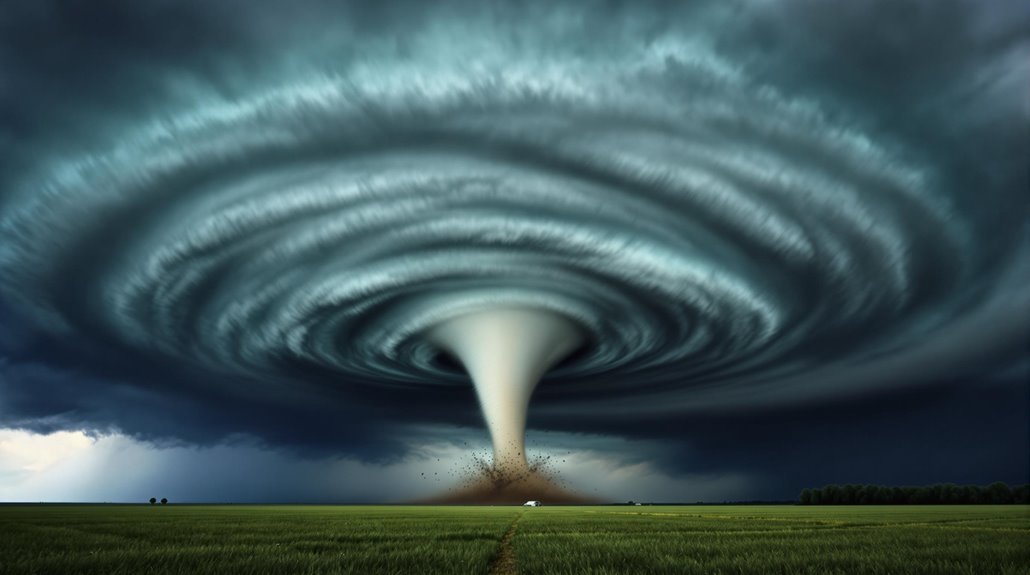
Tornadoes manifest as rotating funnel clouds that extend from thunderstorm bases to the ground, with wind speeds potentially reaching 300 mph and diameters exceeding one mile.
These intense atmospheric vortexes form within supercell thunderstorms through a process requiring strong vertical wind shear and unstable atmospheric conditions.
While tornadoes can move in any direction, they typically track from southwest to northeast at an average speed of 30 mph, though their velocity can range from stationary to 70 mph.
Physical Traits and Signs
A distinctive funnel-shaped cloud formation marks the primary visual characteristic of a tornado, typically extending from a thunderstorm base to the ground. The tornado appearance varies from narrow rope-like tubes to massive multiple-vortex structures that can span up to 4.2 kilometers in diameter, though most average 80 meters across.
| Physical Trait | Observable Characteristic |
|---|---|
| Sky Condition | Dark, greenish coloration |
| Cloud Formation | Low-lying, rotating wall cloud |
| Auditory Signal | Freight train-like roar |
| Visual Indicator | Visible debris cloud |
Critical danger signs include the presence of large hail and a rotating wall cloud (murus). During the dissipation phase, tornadoes often elongate into rope structures, with wind speeds diminishing due to angular momentum conservation. While the funnel may sometimes be obscured by condensation, a debris cloud often indicates the tornado's location.
Formation and Movement Patterns
The intricate process of tornado formation begins with specific atmospheric conditions that must align precisely. Warm air near the ground and cooler air above create an unstable atmosphere, while strong wind shear generates the necessary conditions for supercell rotation.
As thunderstorms develop, the strong updraft tilts horizontal spin into vertical rotation, establishing a mesocyclone.
Tornado dynamics intensify when downdraughts concentrate and lower this rotation, forming a violent rotating column of air. If this column reaches the ground, a tornado materializes.
Most tornadoes exhibit cyclonic rotation and move in the direction of the storm's updraft. The process concludes when the rear flank downdraft wraps around the vortex, cutting off its air supply and causing the tornado to dissipate, often becoming rope-like in appearance.
Common Types of Tornadoes
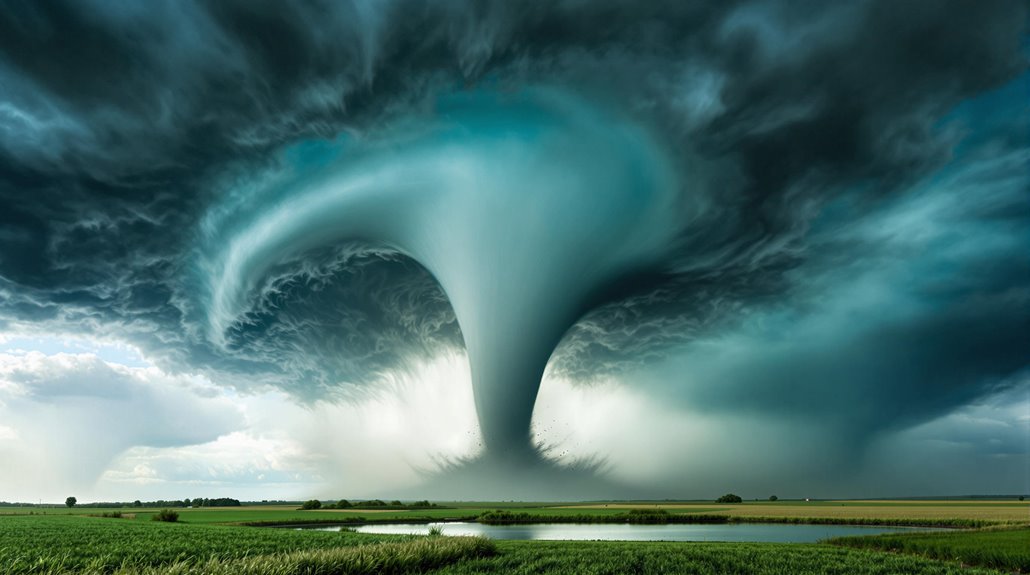
When classifying dangerous atmospheric vortices, meteorologists identify several distinct types of tornadoes based on their shape, formation process, and structural characteristics.
Among the most recognizable shapes are wedge tornadoes, which can exceed a mile in diameter and are often associated with the most violent storms. Cone tornadoes display the classic funnel shape frequently depicted in famous tornadoes, while stovepipe tornadoes maintain a consistent cylindrical width. The rope tornado, despite common tornado myths about size correlating with intensity, can be extremely powerful despite its thin appearance.
Formation patterns yield distinct categories including landspouts, which form without connection to rotating thunderstorms, and waterspouts that develop over water bodies.
Structural variations include satellite tornadoes, which orbit larger vortices, and the rare twin tornadoes that form as parallel systems. Multi-vortex tornadoes represent complex systems with multiple rotation centers, demonstrating the diverse manifestations of these atmospheric phenomena.
Warning Signs and Safety Measures
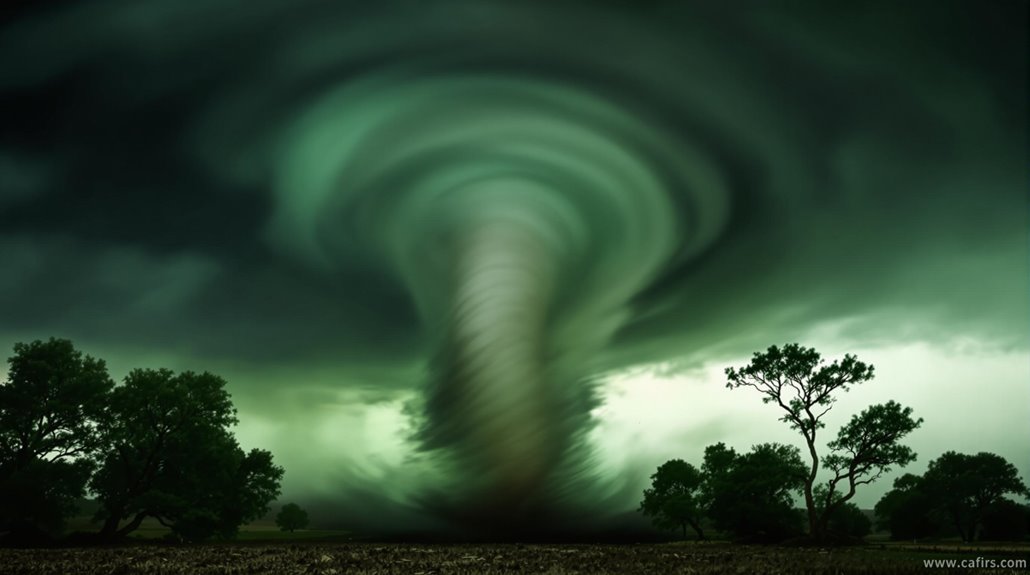
Recognizing tornado warning signs can mean the difference between life and death during severe weather events. Key indicators include dark, greenish skies, large low-lying clouds, funnel formations, approaching debris clouds, and sounds resembling freight trains.
Tornado preparedness involves understanding alert levels issued by meteorological authorities. A tornado watch indicates favorable conditions, while a warning confirms an actual sighting or radar detection. The most severe classification, a tornado emergency, signals a confirmed violent tornado requiring immediate shelter.
Critical safety protocols mandate taking refuge in basements or interior rooms on the lowest floor, away from windows and exterior walls. Mobile home residents must relocate to substantial structures.
Emergency kits and continuous monitoring of weather updates via NOAA radio, television, or mobile devices are essential. Securing outdoor items prevents them from becoming dangerous projectiles.
Understanding these warning signs and implementing proper safety measures greatly increases survival chances during tornado events.
Impact on Communities and Infrastructure

Devastating tornadoes inflict profound impacts on communities and infrastructure, affecting social, economic, and environmental dimensions of affected regions. Studies indicate that 44.19% of communities experience population decline post-tornado, with only 10.66% achieving full recovery within 2-10 years. Small communities of fewer than 5,000 residents face particularly acute challenges in maintaining population stability.
Economic recovery encompasses multiple challenges, including infrastructure reconstruction, temporary housing provision, and business rehabilitation. Communities must address immediate needs while developing long-term rebuilding strategies.
Environmental impacts compound these difficulties through hazardous material releases, ecosystem disruption, and extensive debris management requirements. Low-income areas face disproportionate effects due to limited access to storm shelters and insufficient insurance coverage.
Despite these challenges, community resilience often emerges through collective recovery efforts, though successful rehabilitation typically requires substantial governmental support, exemplified by recent disaster declarations providing essential financial assistance for affected regions.
Geographic Distribution and Seasonal Patterns
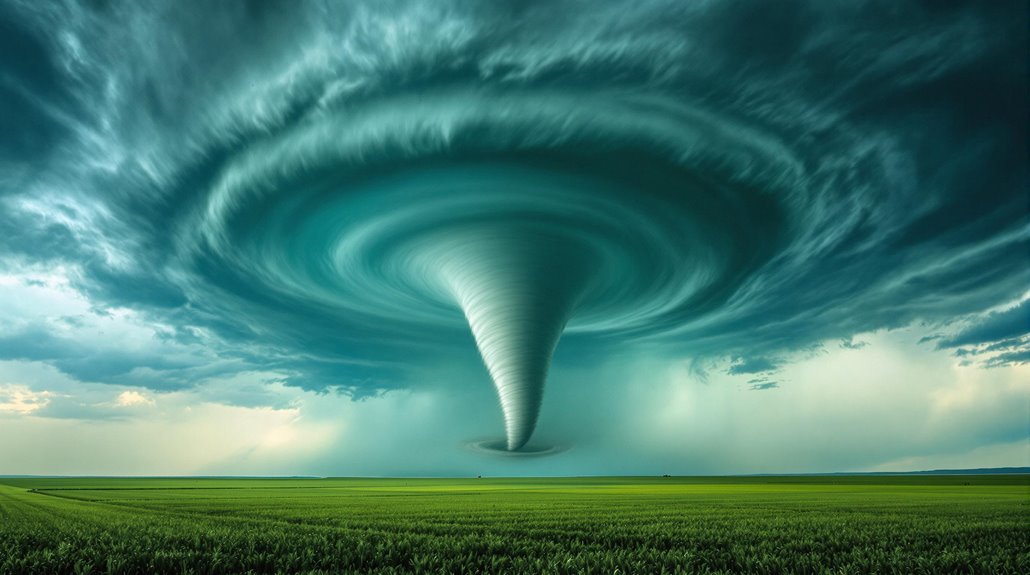
Tornadoes exhibit distinct geographical and seasonal distribution patterns across the globe, with the United States recording the highest frequency at approximately 1,200 events annually.
Other notable tornado hotspots include Canada's prairie provinces, southern Brazil, northeastern Argentina, and Bangladesh, where these atmospheric phenomena occur with significant regularity.
Seasonal peaks vary by region and hemisphere, primarily concentrating in the mid-latitudes during spring and summer months. In the United States, the Southern Plains experience peak activity from May to early June, while the Gulf Coast sees earlier spring occurrences.
Geographic features play essential roles in tornado formation, with areas like Tornado Alley benefiting from the convergence of warm and cold air masses. Mountain ranges, coastal regions, and river valleys create conditions that enhance wind shear and atmospheric instability, fostering tornado development.
While detection and reporting have improved, many events remain undocumented, particularly in remote areas.
Measuring Tornado Intensity

Modern meteorologists rely on the Enhanced Fujita (EF) Scale to measure and classify tornado intensity, utilizing a thorough system that evaluates wind speeds and resultant damage patterns. The scale consists of six categories, ranging from EF0 (65-85 mph) to EF5 (over 200 mph), with each classification representing increasingly severe damage potential.
Wind speed estimation involves analyzing damage indicators and comparing them to standardized criteria. The National Weather Service, as the sole federal authority for official EF Scale ratings, conducts extensive damage surveys to determine tornado classification.
These assessments incorporate multiple data sources, including Doppler radar, photogrammetry, and ground swirl patterns. The tornado classification systems have evolved from the original Fujita Scale to the current EF Scale, which provides enhanced precision in measuring higher-intensity storms.
While the scale primarily relies on damage assessment for wind speed calculations, it remains the most reliable method for categorizing tornado intensity in operational meteorology.
Modern Research and Future Predictions
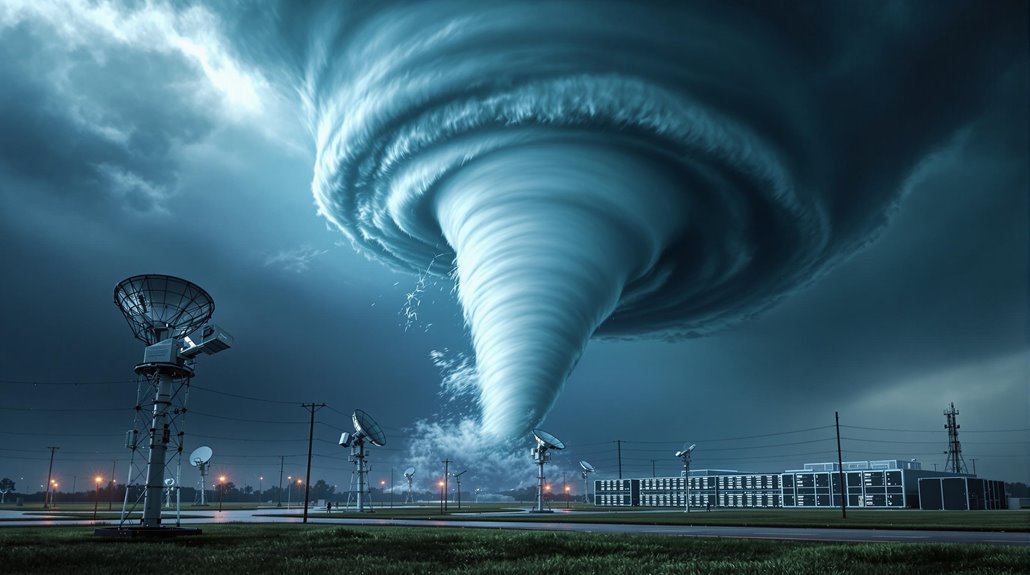
Pioneering research efforts at the National Severe Storms Laboratory (NSSL) have revolutionized tornado understanding through advanced technologies and methodologies.
Modern tornado technology integrates dual-polarization radar, machine learning algorithms, and high-resolution computer models to enhance detection and prediction capabilities. The NTDA algorithm, trained on extensive storm data, calculates tornado probabilities while the TorNet dataset enables AI models to identify formation patterns.
Key developments in tornado forecasting include:
- Warn-on-Forecast program increasing warning lead times through computer-based predictions
- Deep learning models capable of classifying 85% of EF-2 or higher tornadoes
- Ensemble forecasts incorporating Doppler radar data for precise short-term predictions
- Next-generation radar networks with rapid refresh rates for real-time monitoring
These advancements, combined with numerical weather prediction models and explainable AI techniques, are transforming forecasters' ability to detect, track, and predict tornadic activity with unprecedented accuracy.
The Benefits Of Consulting A Public Adjuster
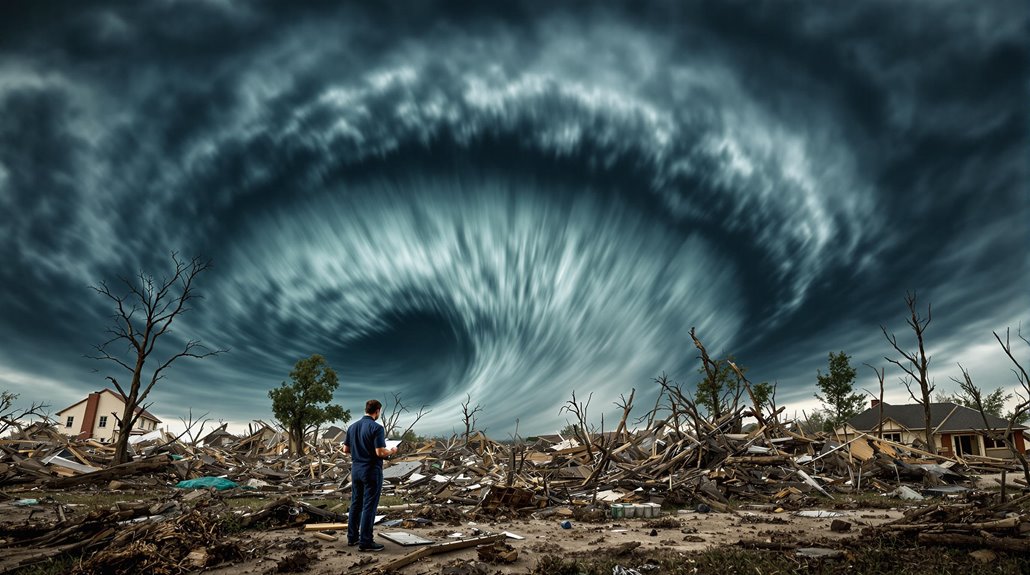
When dealing with tornado damage, consulting a public adjuster provides critical expertise in managing complex insurance claims and securing fair settlements.
Public adjusters conduct objective property damage assessments, thoroughly documenting all losses while interpreting policy coverage to maximize benefits for policyholders.
The involvement of a public adjuster streamlines the claims process through professional negotiation and advocacy, statistically resulting in higher claim payouts compared to self-managed claims.
Studies indicate that claims handled by public adjuster representation can result in settlements up to 500% higher for non-catastrophic damage cases.
Expertise In Insurance Claims
Many tornado victims find that consulting a public adjuster provides significant advantages when filing insurance claims for storm damage. These licensed professionals possess extensive knowledge of insurance policy intricacies and claim negotiation processes, enabling them to maximize settlement outcomes for policyholders affected by severe weather events.
Key benefits of public adjuster expertise include:
- Detailed assessment and documentation of structural and property damages
- Strategic management of complex claims involving multiple damage types
- Professional navigation of overlapping coverage scenarios
- Expert testimony and weather data validation support
Operating on a contingency basis, public adjusters work exclusively for policyholders, ensuring thorough damage documentation while handling all necessary paperwork and communications with insurance companies.
Their specialized knowledge helps avoid common pitfalls that could result in claim denials or underpayment.
Public adjusters typically secure higher settlement amounts through comprehensive representation compared to policyholders who handle claims independently.
Objective Damage Assessment
Professional damage assessment conducted by public adjusters provides property owners with extensive and unbiased evaluation of tornado-related losses. Their systematic approach encompasses thorough documentation of structural damages, interior deterioration, and exterior devastation using advanced technological tools like drones for inaccessible areas.
The damage evaluation process involves collaboration with forensic accountants and construction estimators to guarantee precise cost assessment. Public adjusters implement strategic claim strategies, including detailed inventories of damaged items, photographic evidence, and extensive documentation of all communication with insurance providers.
Their expertise enables accurate identification of hidden vulnerabilities and non-visible damages that might otherwise go unnoticed. This methodical approach, combined with industry-standard pricing guides and professional presentation of claims, maximizes the probability of securing appropriate compensation for property owners. Operating on a contingency fee basis, public adjusters typically charge between 5-20% of the final settlement amount, making their services accessible to property owners facing tornado damage.
Streamlined Claim Process
Public adjusters greatly streamline the tornado insurance claims process through expert management of documentation, filing procedures, and negotiations. Their specialized knowledge of insurance policies and claims efficiency protocols enables thorough support while maximizing settlement outcomes for affected property owners.
Key aspects of policyholder advocacy include:
- Conducting detailed damage assessments and documentation
- Managing all communications with insurance carriers
- Ensuring compliance with policy requirements and deadlines
- Negotiating settlements based on accurate damage valuations
Through professional representation, public adjusters handle time-consuming administrative tasks while property owners focus on recovery.
Their expertise in claims management reduces processing delays and increases the likelihood of favorable settlements. This systematic approach combines detailed documentation, policy knowledge, and negotiation skills to expedite claim resolution while protecting policyholder interests.
Property owners can expect up to 10% of their total claim settlement to compensate their public adjuster for comprehensive claims management services.
Higher Claim Payouts & Settlements
Statistical evidence demonstrates that engaging a public adjuster greatly increases insurance claim settlements for tornado damage.
Studies reveal that policyholders utilizing public adjusters receive notably higher payouts, with catastrophic claims resulting in settlements 747% above average and non-catastrophic claims showing 574% higher compensation rates.
Public adjusters employ specialized claim strategies and settlement negotiation techniques acquired through extensive experience in the field.
Their expertise in documenting damage, understanding policy intricacies, and maneuvering complex claims processes results in more thorough assessments.
Operating on a contingency fee basis, these professionals are incentivized to maximize settlements.
Research by FAPIA indicates that homeowners working with public adjusters received average payouts of $22,266, compared to $18,659 for those who processed claims independently.
Organizations like Public Claims Adjusters Network maintain strict standards through bi-yearly audits to ensure policyholders receive top-quality representation.
About The Public Claims Adjusters Network (PCAN)

Insurance claim specialists at the Public Claims Adjusters Network (PCAN) provide extensive claim management services for policyholders facing property damage and losses. Their team of Public Adjusters facilitates an optimized claims process through advanced assessment technologies and systematic documentation procedures.
- Implements state-of-the-art software systems for precise damage evaluation and claim filing
- Delivers rapid emergency response services including temporary housing coordination
- Conducts thorough property assessments to identify all compensable damages
- Provides specialized expertise in both residential and commercial claims management
PCAN operates on a contingency fee basis, eliminating upfront costs while maximizing settlement outcomes for clients.
Their all-encompassing approach encompasses detailed damage documentation, strategic negotiations with insurers, and strict compliance with regulatory requirements.
The network's services extend across multiple loss categories, including fire, water, and storm damage, with additional specialization in business interruption analysis and disaster recovery planning.
Frequently Asked Questions
Can Tornadoes Occur at Night, and How Can People Stay Safe Then?
Night tornadoes occur frequently and are particularly dangerous due to reduced visibility. Essential safety measures include monitoring weather alerts, maintaining emergency kits, and sheltering in windowless interior rooms with protective covering.
What Is the Longest-Lasting Tornado Ever Recorded in History?
The Tri-State Tornado of March 18, 1925, holds historical records as the longest tornado, maintaining continuous contact for 3.5 hours while traveling 219 miles through Missouri, Illinois, and Indiana.
Can Tornadoes Cross Water Bodies Like Rivers and Lakes?
Despite common misconceptions, tornadoes regularly interact with water bodies. Studies show over 500 documented cases of tornadoes crossing rivers and lakes, demonstrating consistent tornado behavior during water interaction.
Do Tornadoes Always Spin in the Same Direction?
Most tornadoes in the Northern Hemisphere rotate counterclockwise, while Southern Hemisphere tornadoes typically rotate clockwise. Tornado formation and direction are influenced by larger atmospheric systems, though approximately 5% rotate opposite expected patterns.
Can Buildings Be Designed to Completely Withstand Even the Strongest Tornadoes?
Recent structural innovations in tornado resistant design, particularly ICF construction with reinforced concrete, can protect against EF-5 tornadoes, though no building is completely immune to the most extreme wind forces.
References
- https://stormaware.mo.gov/tornado-facts-history/
- https://www.metoffice.gov.uk/weather/learn-about/weather/types-of-weather/tornadoes/how-are-tornadoes-formed
- https://grademiners.com/blog/writing-a-good-tornado-research-paper
- https://en.wikipedia.org/wiki/Tornado
- https://www.britannica.com/video/tornadoes/-240519
- https://www.britannica.com/science/tornado
- https://www.brownsvilletx.gov/289/What-Tornadoes-Are-What-Causes-Them
- https://www.sciencing.com/characteristics-tornadoes-8464539/
- https://www.britannica.com/video/tornadoes/-226131
- https://sites.psu.edu/pmarkowski/how-tornadoes-form/
